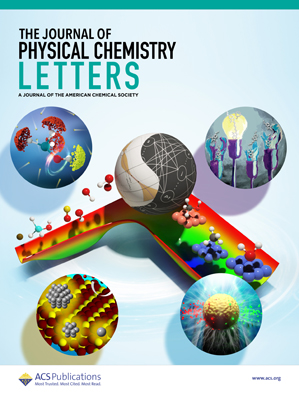Harnessing Multimetallic Effects via Metal-Phenolic Networks: Feasible On-Surface Assembly and Direct Use as Electrocatalysts.
IF 4.6
2区 化学
Q2 CHEMISTRY, PHYSICAL
引用次数: 0
Abstract
Multimetallic electrodes are gaining significant attention due to their ability to offer diverse electronic configurations and local lattice distortions, optimizing interactions with reactants and intermediates. Metal-phenolic networks (MPNs) present a promising solution by incorporating a wide range of metals and ligands to enhance specific electrochemical reactions. Despite their potential, on-substrate synthesis and direct application of MPNs in electrocatalysis have been limited. This study introduces an elegant, feasible strategy for on-substrate synthesis of MPNs and direct application as the oxygen evolution reaction (OER) catalyst without post-treatment and systematically evaluates the metal ion effect leveraging a multimetallic doping strategy. Notably, the trimetallic complex performs unambiguously better than the bimetallic and monometallic counterparts. TA-CoNiFe@NF demonstrated superior OER performance, with an impressive overpotential of 215 mV at 10 mA·cm-2, a Tafel slope of 37.3 mV·dec-1, and excellent stability over 100 h. The computational results illustrate the effect of metal ion doping on the OER mechanism. We demonstrate that phenolic ligands in MPNs offer unique benefits compared to MOFs, alloys, or oxide hybrids, enabling facile on-surface coordination and versatile metal incorporation. This effective, facile approach to multimetallic tuning paves the way for high-performance electrocatalyst designs and synthesis.利用多金属效应通过金属酚网络:可行的表面组装和直接使用作为电催化剂。
多金属电极由于能够提供不同的电子结构和局部晶格扭曲,优化与反应物和中间体的相互作用而受到广泛关注。金属-酚网络(mpn)是一种很有前途的解决方案,通过结合广泛的金属和配体来增强特定的电化学反应。尽管mpn具有潜力,但其在底物上的合成和在电催化中的直接应用受到限制。本研究介绍了一种优雅、可行的策略,用于在衬底上合成mpn并直接用作析氧反应(OER)催化剂,无需后处理,并利用多金属掺杂策略系统地评估了金属离子效应。值得注意的是,三金属配合物的性能明显优于双金属和单金属配合物。TA-CoNiFe@NF具有优异的OER性能,在10 mA·cm-2下的过电位为215 mV, Tafel斜率为37.3 mV·dec1,并且在100 h内具有优异的稳定性。计算结果说明了金属离子掺杂对OER机理的影响。我们证明,与mof、合金或氧化物杂化物相比,mpn中的酚类配体具有独特的优势,可以实现易于的表面配位和多功能的金属结合。这种有效、简便的多金属调谐方法为高性能电催化剂的设计和合成铺平了道路。
本文章由计算机程序翻译,如有差异,请以英文原文为准。
求助全文
约1分钟内获得全文
求助全文
来源期刊

The Journal of Physical Chemistry Letters
CHEMISTRY, PHYSICAL-NANOSCIENCE & NANOTECHNOLOGY
CiteScore
9.60
自引率
7.00%
发文量
1519
审稿时长
1.6 months
期刊介绍:
The Journal of Physical Chemistry (JPC) Letters is devoted to reporting new and original experimental and theoretical basic research of interest to physical chemists, biophysical chemists, chemical physicists, physicists, material scientists, and engineers. An important criterion for acceptance is that the paper reports a significant scientific advance and/or physical insight such that rapid publication is essential. Two issues of JPC Letters are published each month.
 求助内容:
求助内容: 应助结果提醒方式:
应助结果提醒方式:


